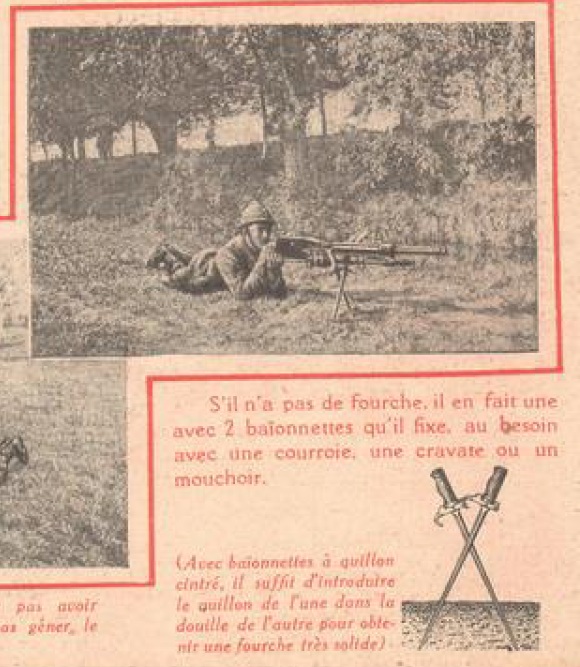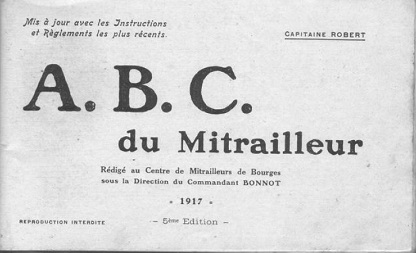So last Friday, we posted a copy of an old World War I French machine gun booklet. Not anything particularly exotic – it was only talking about the main machine guns that were in common use at the time. But you never know what neat tidbits you’ll find in 100-year-old pamphlets, and so I always make a point to read through them even if they don’t look like they have new information. Because occasionally I find something like this:

Many of the heavy machine guns used in World War I were intended to be fired from fixed tripods, and were not issued with any sort of bipod. So what if you don’t have the tripod and le boche are coming over the hill? You improvise! To translate the caption:
If you do not have a bipod, make one from two bayonets, if necessary tied together with a belt, tie or handkerchief.
If the bayonets have hooked quillions, simply insert the hook of one into the muzzle ring of the other for a very solid mount.
Presto! A field expedient bipod for your 1907 St Etienne. I’m definitely going to try this out, although I don’t have a St Etienne to play with.
If you missed the booklet last week, you can download it here:





Looks a bit too optimistic, don’t you think? After all, the gun pictured is a 1907 St. Étienne, not some early LMG…
It certainly beats trying to shoot it without any kind of support…I will be trying this technique out with a Browning next time I’m at the range just to see how it works.
Of course, if you put it that way it certainly beats trying to shoot it in “freehand” style! I recall seeing a photo taken during the Spanish Civil War depicting a prone(presumably) Republican soldier firing some Hotchkiss LMG (or possibly a locally-made Trapote LMG) from an improvised tripod made from two pieces of what seemed to be steel rod or very heavy wire, in the shape of a large “X”.
I look forward to seeing any video of your experiment with the Browning!